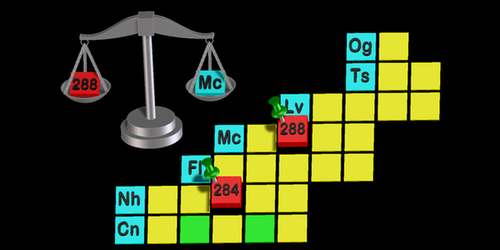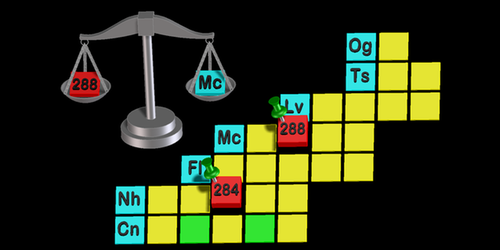Pinning Down Superheavy Masses
Researchers synthesize superheavy elements by smashing together nuclei. But identifying the mass of the resulting short-lived isotopes is tricky, often relying on indirect methods. Now, Jacklyn Gates from Lawrence Berkeley National Laboratory, California, and her colleagues have directly measured the masses of two superheavy isotopes. These two firm data points strengthen researchers’ confidence in previous mass measurements of neighboring isotopes in the periodic table.
Normally, physicists determine the mass of a single nucleus by tracking its decay—sometimes through several steps—to some well-known daughter nucleus. Imagine, for example, that a nucleus decays by emitting four alpha particles (each containing two protons and two neutrons), arriving at the identifiable daughter nucleus nobelium-255 (atomic number ). Working backwards, researchers can determine that the original nucleus was darmstadtium-271 . The problem for superheavy elements with atomic numbers above is that the daughter nuclei are largely unknown, so researchers have devised other, less certain, techniques for identifying the decay channels of the isotopes in this mass range.
In their direct method, Gates and colleagues irradiate an americium-243 target with a beam of calcium-48 ions, producing superheavy nuclei with a variety of masses. These nuclei pass through a series of devices that spatially separates them based on their mass-to-charge ratio. After this filtering, the nuclei embed in a silicon detector that records alpha emissions. Any detected alpha pinpoints the position—and therefore the mass—of an embedded nucleus. Using this method, the team detected isotopes of moscovium and nihonium , determining their masses to be 288 and 284, respectively. By measuring decay times and energies, the researchers were able to show that their results are consistent with previous superheavy mass studies.
This research is published in Physical Review Letters.
–Michael Schirber
Michael Schirber is a Corresponding Editor for Physics based in Lyon, France.





